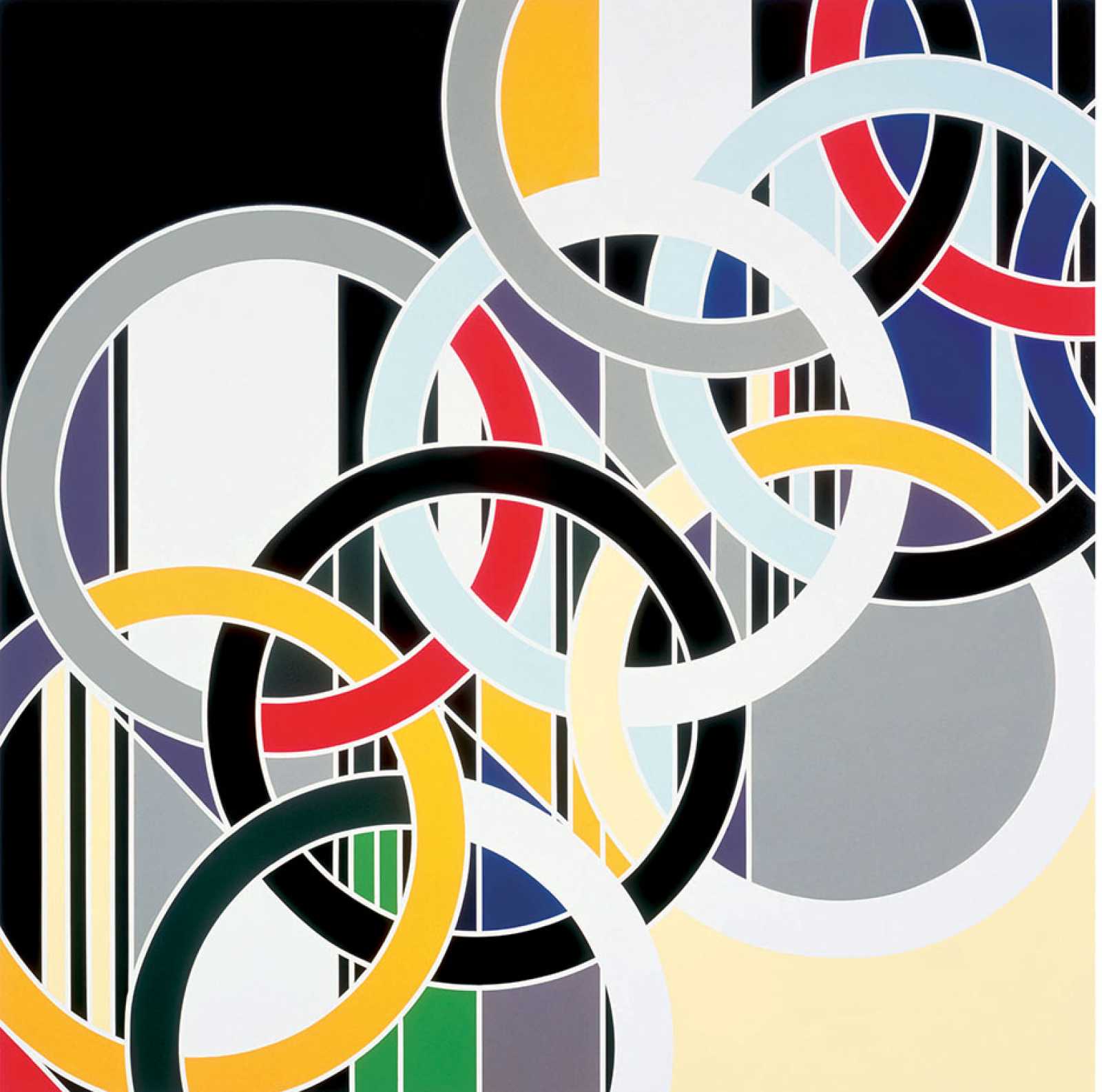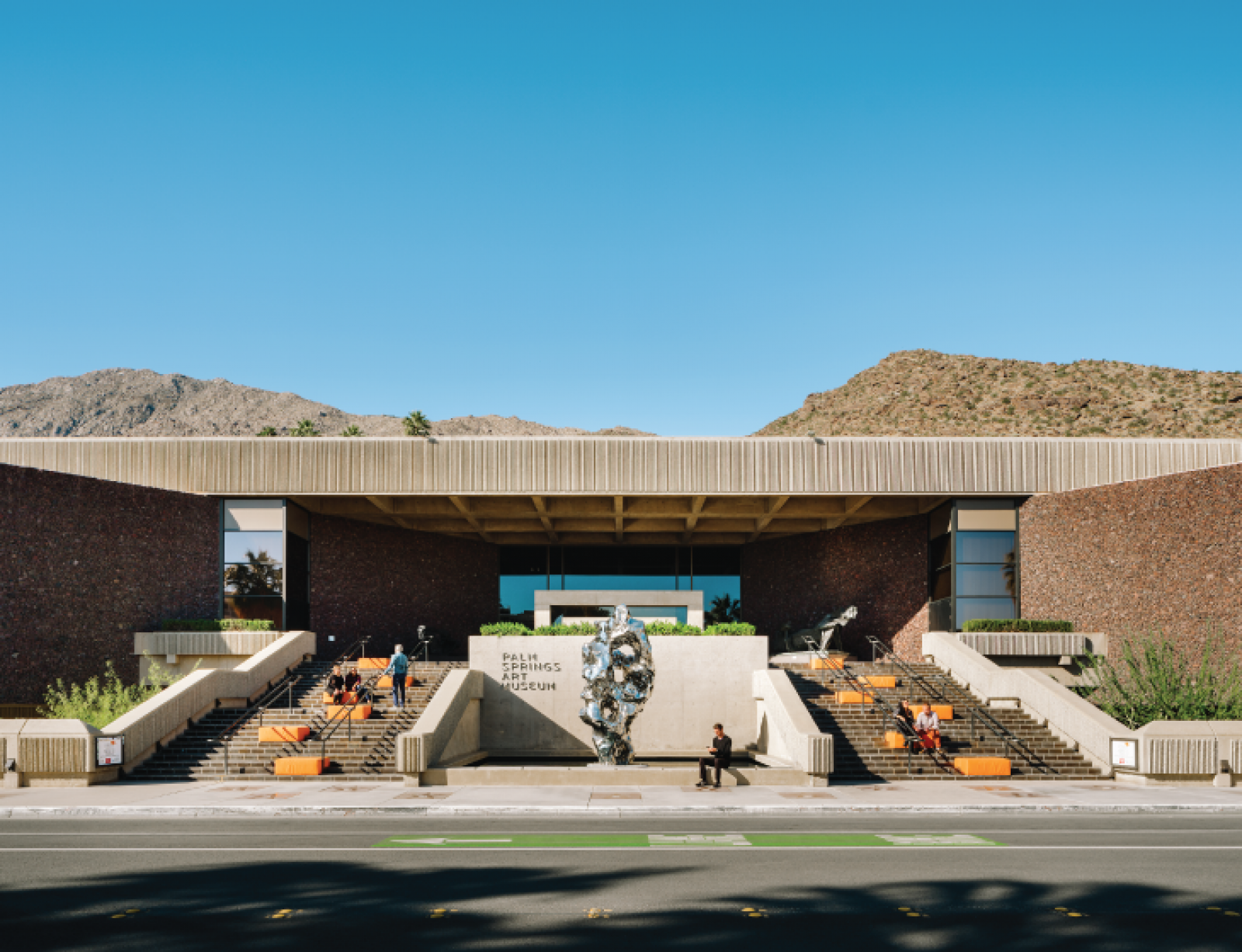Get Inspired by Sarah Morris
Sarah Morris (American, 1967), 1952 (Rings), household gloss paint on canvas, 84 x ¼ x 84 ¼ inches. Museum purchase with funds provided by Gladys Rubenstein in memory of Sam Rubenstein, 26-2007.
How do you create a work of art that reflects large abstract ideas? Artist Sarah Morris considers and deconstructs different ideas to communicate them from an entirely different view. She does this using geometric forms, lines, colors, and patterns.
Activity
Examine different objects or structures, such as buildings, to determine their most essential components. Create an image by considering its essential geometric shapes and dominant colors; then experiment with a few renditions that convey your ideas to create your own abstract composition.
Activity Instructions
Step 1
Think about an idea you would like to focus on that will form the inspiration for your work of art. Sarah Morris is often inspired by architecture, so you might want to start by thinking about an interesting building or something familiar in your environment, like your house or your street. If you can, examine your point of inspiration in person or find a photo to study.
Step 2
Consider organizing principles, such as orientation, shapes, and color palette.
Closely examine your point of inspiration and think about the way it is oriented. Does it encourage you to focus up and down (vertical) or left and right (horizontal)?
Look for dominant shapes and patterns. Do you see any lines, circles, squares or triangles that are essential to the construction of your subject? What colors do you see or are you reminded of when you think about your subject?
Step 3
Once you have determined the orientation, shapes, and color palette, begin sketching out your ideas.
It might be helpful to start by sketching your object realistically first, and then gradually move towards the lines, outlines, shapes and colors that frame and compose your image or concept.
Tip: Use a ruler to make straight lines and edges. You can also measure distances to map out coordinates for a precise and architectural look. You can trace a round object such as a cup to create circular shapes.
Step 4
Once you have zeroed in on the essence of your idea, arrange your composition. Keep in mind balance, so that your eye is not focused on one area over another. Use your chosen color palette to inform your work. Continue to reference your original image and idea to help guide your process, but do not be afraid to improvise as new ideas reveal themselves as you create.
Step 5
Finalize your composition. How has the process shaped the way you think about and discover what is essential to communicating big ideas about objects or structures?






